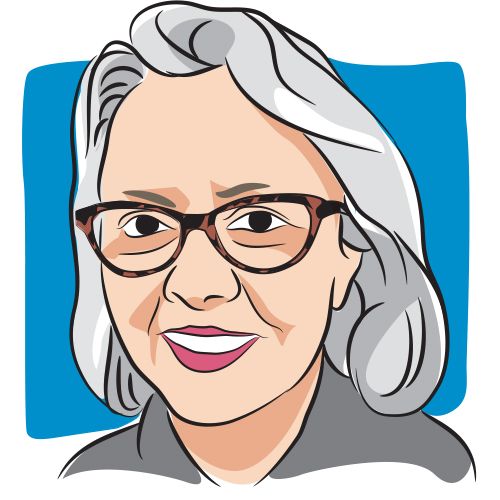Article
A New Role
Author(s):
A guide for navigating the challenging territory of caretaking.
Being a caregiver is one of the most important—and loving—things you can do for someone. And, since you’re reading this, you’re likely one of the millions of Americans who are in this exact role. Navigating this new terrain isn’t without its challenges and, while everyone’s cancer journey is unique, there are some caregiving tips that universally apply.
Help with research. A good use of this time is to learn about the disease, the range of potential treatment options, and to begin developing a treatment plan. For caregivers, it’s worth it to invest a little time helping the patient with their research, and getting up to speed on the vocabulary. This will help break down the social isolation that patients can feel, just by widening the pool of people they can talk to about the absurd minutia of the disease. It won’t all be comforting information, but understanding can make it easier to make timely decisions later. The doctor should be able to help guide further education, but doctors have significant schedule constraints and have limited time to spend with patients. To make the most of this time, caregivers can help hone the questions and if needed, request for additional appointments to review the pros and cons of different treatment options. For really big decisions, make sure you talk with the patient a few days beforehand in case questions come up that require a little more research.
Listen and learn. In the doctor's office, a patient is likely to forget a significant portion of what the doctor says. This makes sense considering the fact that cancer is an emotional topic and a lot of life-altering information is presented. This is where you come in. Listen carefully, take notes, or, with the doctor's OK, record the session to help the patient regain the information when you’re home and beginning to put together an action plan. A caregiver no-no is pirating the conversation with the doctor. Follow the patient’s lead: If you have permission to pursue a dialogue with the doctor, fine. Otherwise, let them make the call. Once the treatment plan has been determined by the medical team, get the plan in writing.
Be realistic about what's ahead. Surgery, chemotherapy, and radiation are very taxing so you never want to minimize what your loved one is going through or may soon experience. Keep in mind that some people experience extreme nausea and fatigue during chemotherapy and radiation, and others will lose their hair. In general, know that the toll chemo takes is cumulative. The patient may feel fine at the outset of treatment but will likely feel worse before they start feeling better.
Watch for hidden symptoms. Once treatment has started, the patient may suffer symptoms or side effects from the cancer or the treatment. However, many symptoms and side effects are silently endured by cancer patients. Here’s another entry point for caregivers who may be more likely to notice if the patient is having difficulty with a task or seems especially uncomfortable. Counselors can help ameliorate stress, depression, and other psychological symptoms. Physical and occupational therapy can mitigate pain and infirmity, while dietitians, acupuncturists, and massage therapists can make treatment easier. Social workers can help arrange other needed support services.
Kind gestures help. Small gifts, cards, and flowers can help lift your loved one's spirits. Experts say that it's completely normal for patients to experience days where they feel dejected, lonely, afraid, or depressed. While you don't want to overdo it, consider it your job to offer words of hope and reassurance. In addition, allow the patient some time and space to be alone. Relaxation techniques, such as meditation, light reading, walking, or even a movie, can be helpful. Don’t smother or shield your partner from finding his or her own source of strength and inner balance.
Discuss legal issues. If the patient hasn’t already, they should take care of important legal affairs such as wills, living wills, and medical power of attorney. Even if the cancer has a high cure rate, it's something we should all do at some point. It’s never fun, but it will only get harder as treatment progresses.
Allow the person to feel their feelings. As a caregiver, you want to be sure they feel comfortable expressing exactly how she or he feels. Remember: You don’t want them to feel like they have to feel peppy and positive all the time. During chemotherapy or in the waiting room, for example, take your cues from them and give them permission to be whatever they are in the moment—chatty, sad, depleted, or worried.
Take a step back. Conflicts about treatment are often more intense when the cancer recurs or is diagnosed at an advanced stage with expectations of shorter survival, experts say. In these cases, the issue of whether to do more chemotherapy or look into other options rises to the surface more quickly. Caregivers may want the patient to keep pushing and try everything possible to fight the cancer, while the patient believes it’s time to stop treatment. Or, a patient may want to pursue alternative treatments, upsetting caregivers who want them to stick to conventional medicine. Regardless of the scenario, it’s up to you to step back and, again, allow your loved one to make the choices that are right for him or her.
Call a family meeting. If you’re caring for a parent who lives far away from you, speak with family members about how to best manage care. The question: Who will do what? Or more specifically: Who has the time and inclination to do what? And, if the parent can participate, he or she should. It’s important for the patient to be involved in the dialogue. Quarterly or monthly follow-up meetings should be planned as well to allow for revisions in the caregiving plan. And meetings should be scheduled before a new stage of treatment. Finally, if outside help is needed, be it a home health aide or hospice care, always be honest with the parent. Ultimately, they should maintain his or her independence and control all the decisions about care.
Organize information. Purchase a binder and a hole-punch. That way you'll have somewhere to place the unending stream of doctor's notes, bills, test results, insurance records, info about support groups, and other cancer-related pieces of paper that will add up—fast.
Ask for help. Doing the laundry and stocking the house with comfort foods, like ginger ale, saltines, and soothing teas are great. But you may also be trying to juggle a job, maintain order in the house, and get the kids to school, and this may be too much. If this is your situation, and you feel like you can’t get the basics done, ask for help. Neighbors and friends are usually happy to create a rotating schedule where they pitch in to walk the dog, pick up groceries, or make phone calls. For patients receiving terminal care, respite services for caregivers may be available through a hospice agency.
Set up a survivorship plan. Thinking of life after cancer may be an afterthought, especially with the laundry list of doctors’ appointments, household tasks, and outside work that takes its toll on the patient and caregiver. But the transition from active treatment to being a healthy survivor is just as important, including knowing what follow-up visits, long-term effects, and limitations the patient will have in the years after treatment. Survivorship plans have been developed for a number of diseases to help manage health and other related concerns. A caregiver can help by tracking these from day one and by keeping in touch with the medical team during and after treatment.
—Erik Ness contributed to this article.
Generally speaking, cancer does not move at breakneck speed, and it’s important to take some time to process what’s happened. While you may be in the “shock and awe” stage with the patient, they are depending on you to be a source of help and comfort.
Talk it out. Once a diagnosis is confirmed, the caregiver can help the patient by discussing decisions that will need to be made quickly, including second opinions, treatment, and where to be treated. And because cancer is rarely simple, many decisions are made with imperfect information. Depending on the cancer, there may be two or more therapy choices with similar chances of success but different side effects. Balancing the risks of a clinical trial in another city against the comforts of treatment at home can be difficult. When faced with challenging decisions, the patient’s priorities can help make a complicated medical decision easier. While the patient will want to know what you think about treatment options or next steps, the person with cancer should decide what actions to take. What a person wants most from a caregiver is someone who will listen without offering judgments, easy solutions, or platitudes. Your job is to remain calm and not overwhelmingly anxious. Knowing what they want will maintain forward momentum in the absence of perfect information.




